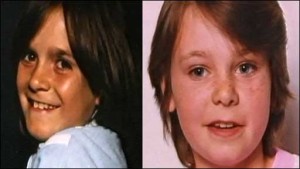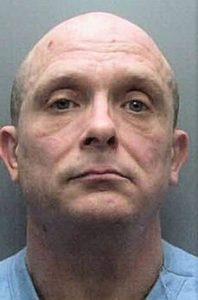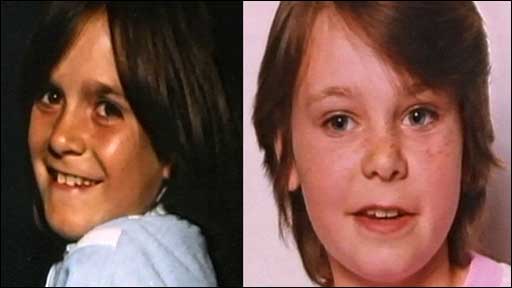A Brighton man killed two nine-year-old schoolgirls, was tried and found not guilty then went on to kidnap and sexually assault another young girl, a jury was told today (Tuesday 16 October).
Russell Bishop, 52, a former roofer, who lived in Stephens Road, Hollingdean, denies killing Nicola Fellows and Karen Hadaway in October 1986 in Wild Park, in Moulsecoomb.
He was jailed for the later attempted murder, of a seven-year-old girl, which took place in 1990, the jury heard.
A new trial for the Moulsecoomb murders is taking place at the Central Criminal Court – better known as the Old Bailey – in London.
Brian Altman, prosecuting, said: “Thirty-two years ago, almost to the day, on Friday 10 October 1986, two nine-year-old girls, Nicola Fellows and Karen Hadaway, were found dead in the woods at Wild Park in Brighton.
“Both had gone missing the evening before, Thursday 9 October 1986, and despite searches by police and public they were not to be found until the following afternoon.
“That grim discovery led to the largest and longest-running police inquiry Sussex Police has ever known.
“Post-mortem examinations conducted that Friday evening revealed both girls had been strangled to death and they had been sexually assaulted.
“The killings were entirely intentional and they were carried out in the woods by a man who sexually assaulted them for his own gratification.
“That man, say the prosecution, was this defendant, Russell Bishop.
“On the day of their murders, on Thursday 9 October 1986, the girls, who were friends despite attending different schools in the Brighton area, had gone out to play after school.
“They both lived in the same street in an area known as Moulsecoomb on the northern outskirts of Brighton.
“The residential area of Moulsecoomb nestles on the east side of the A27 and the A270 Lewes Road that runs between Brighton and Lewes.
“On the west side of the road is Wild Park, which is part of the South Downs and beyond its playing fields there is a grassy bank that steeply rises up into dense woods to Highfields, a residential street and the Coldean area beyond.
“It was here, a mere half a mile or so from their homes, that the girls were found dead.

“This defendant was, as you will hear, arrested in 1986, charged and indeed tried the following year, in 1987, for the murders of both girls, but on 10 December 1987 he was acquitted by a jury at Lewes Crown Court.
“Despite the acquittal, the case was never closed and the police have continued to investigate it.
“One significant part of the enquiry has been to re-evaluate various areas of scientific work that were performed for the purposes of the 1987 trial but through the lens of modern-day techniques.
“DNA profiling, which, although available in 1986 and 1987, was then in its infancy.
“Because of the new evidence, and without it making any judgment about the guilt or otherwise of this man, the Court of Appeal has quashed the 1987 acquittals.
“That means that the defendant can be prosecuted again based on the evidence that existed then and the new evidence that is available now.
“Evidence of the re-evaluation of the science available at the time of the original trial and new science, we suggest, proves that Russell Bishop, was, to the exclusion of anyone else responsible for the murders of the two girls.
“However, the case against him does not only rely on scientific evidence. It relies on it within the context of the story of the case as a whole, including the defendant’s movements, his actions and what he had to say to the police, including, as you will see, significant lies he told at the time.

“While the prosecution has no obligation in murder to prove the motive for any killing, the killing of these two girls clearly has the most obvious motive.
“Plainly the main, if not the only, motive here was sexual and paedophilic. As I have said, both these little girls were sexually assaulted, which I am going to have to tell you more about later.
“Finally, let me add this. In the course of the case – indeed in the course of this opening address – I am going to be showing you a few images of the den and the girls as they were found. Inevitably, they are upsetting.
“However, I can assure you that this is not being done to prejudice you against the defendant, but because, as you will come to see, the detail in those images cannot be reproduced in any other way and because they show that the defendant knew important detail about the situation and condition of the girls at the scene that only the killer could have known.
“So, against that introduction, let me now come to the detail. Inevitably, I have a good deal of ground to cover and so this address will take some considerable time, but the detail will help you become familiar with the story of the case and where witnesses fit into it and with other evidence in the case.”
The trial continues.










Comments 1